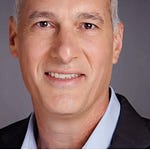For Tom Duncan, nature had always been more than just a place for recreation, it was an all-consuming way of life.
He lived out on the land, in the vast, sun-kissed Australian outback, in an extended family farming community that would gather to help each other with the harvest:
“It was such a great time in my life, working together on farms in rural Australia. It was really instructive for me to learn about how nature works and some of the complex systems that farming operates within.
“There's moments of great beauty in nature and being immersed in it and just appreciating nature for its own wonder and amazement that we have so much biodiversity, so much abundance, and that's what really inspired me to this day to love nature the way I do, and do the work that I'm doing.”
“My mother was a positive influence on me, as a child we would pick native seeds and gum nuts, and make Christmas wreaths for people’s doors, to spread the Christmas cheer. We would sell these ornate Christmas wreaths at weekend markets out of the back of our family Holden station wagon.”
But Tom’s rural idyll was shattered by a boding realisation that extreme climate events were becoming more and more frequent. From a young age, he noticed a worrying pattern of the land increasingly being ravaged by more fires and more floods.
“Our farming businesses was hard work, long hours, and sometimes less than spectacular returns if there were extreme weather events.I could see the changing climate and water and soil fertility conditions on our farms deteriorate over the years - this was my wake up call.”
He decided he would be more than a witness to nature’s destruction and channelled his deep-rooted connection to the land into a life-long dedication to regeneration.
Fresh out of university, he travelled to Inner Mongolia and to the North Central Plains to work on large-scale grassland restoration projects.
After 15 years of working in land restoration he learnt that it’s “complex, difficult, it needs grassroots up as well as policy and incentive top-down to really succeed.”
He noticed a disconnect between how we value, finance and incentivise regenerative and sustainable land management practices:
“I worked on some pioneering ecosystem service markets in Australia where farmers would bid to provide ecosystem services to improve water quality, biodiversity values and sequester carbon.
“That project raised about $300 million and showed me that you could develop and deliver ecosystem services markets, but there just wasn't enough scale.”
For Tom, this was both deeply hopeful and deeply frustrating.
The solution to stopping runaway climate change was not only within reach, but in sight:
“By transitioning to regenerative agriculture across 2.5 billion hectares, humanity could sequester all of our global emissions every year.”
Yet there was no mass adoption of land regeneration; “it was still just the domain of government policy units and ad hoc programs, and when a government changes, the program might get scrapped or be toned down.
“I saw that there was a need for a mass market approach to financing land regeneration, and the creation of new incentivisation models.”
Tom founded Earthbanc – a digital green banking investment platform – as a groundbreaking private sector solution to bring regeneration to mass markets.
Earthbanc is bridging the market incentives gap with viable, proven and profitable investment solutions that are dramatically advancing the transition to a regenerative, sustainable future. Earthbanc’s climate fintech innovation was recognised last year when it won the Mastercard Lighthouse FINITIV program in Spring 2021, and the company is now ready to scale to the next level in the booming climate and fintech sector.
How do Earthbanc fintech solutions solve the problem of how to finance mass adoption of regenerative agriculture?
Finance has been missing from carbon project developments in a big way, and Earthbanc is solving that problem.
Earthbanc makes climate action profitable for any stakeholder.
It offers:
1. Verified carbon credits
2. Corporate and private investment accounts to invest in a carefully curated and audited portfolio of land regeneration/carbon removal projects
3. A regenerative finance (Refi) revolution for the masses: a soon-to-be launched app will enable anyone to easily invest in and profit from land regeneration projects.
Earthbanc’s green investments finance agroforestry, regenerative agriculture, mangrove and sea grass restoration, kelp forest protection, holistic grazing and more.
It’s aim is to enable sustainability-fuelled abundance as a core incentive for all of humanity.
It’s something that we need to live and we know that aligned incentives allow many different stakeholders to start moving in the same direction and toward the same goal.
A major problem that Earthbanc solves is providing the infrastructure and aligned incentives that not just allow trillions of climate finance funds to flow each year, but encourage it by verifying the climate and carbon reduction claims of the finance - enabling investors to trust in the outcomes by examining the data and claims.
We sell carbon credits on our fintech blockchain platform
Earthbanc can be described as a carbon bank. We're the first fintech blockchain platform where you can deposit your carbon into a bank-like vault that sits on a blockchain.
Farmers register on the Earthbanc platform, and we measure the carbon sequestration in the landscape of that farmer.
How do you verify and measure carbon sequestration and credits?
Despite the growing corporate commitment to net-zero, its been difficult for carbon buyers to find third-party annually audited carbon credits. Earthbanc is solving this by offering the world’s first continuously audited offsets.
We use AI models that are trained on satellite remote sensing data from the European Space Agency, we then get that carbon credit verified as a true carbon reduction.
With venture backing from the European Space Agency, Earthbanc leverages AI, web3 and data science to annually audit the underlying carbon asset in carbon credits bringing increased transparency and credibility to carbon markets.
The company has audited the carbon stocks of over 13M hectares of forest globally using satellites and proprietary remote sensing technology.
Who buys Earthbanc carbon credits?
We have large corporate buyers who are buying carbon on our platform every month. We’re selling hundreds of thousands of dollars worth of carbon, so a farmer can get paid for their ecosystem services.
What makes Earthbanc’s solution so potent in combating the climate crisis is its basis on expert knowledge of land restoration and paying farmers in areas of the world where the impact is the greatest – both for nature, and for people.
How fast is the carbon credit market growing?
Last year there was a 969% increase in nature-based solutions carbon futures contracts. It was hard to find a 969% growth in any asset class in 2021 – but it the growth was in futures contracts on nature-based carbon solutions which is what Earthbanc measures.
We mint the carbon on a layer one blockchain, and when we mint those carbon credits that are then available for sale on our market platform.
To democratise sustainable abundance through climate investing, Earthbanc is launching an app
The Earthbanc app will provide a carbon bank with easy on and off fiat ramps for users globally, including for the unbanked, bringing the next billion users into the regenerative finance revolution.
It's a desktop app that you can access on your laptop computer. It's not a mobile app yet, but once you sign up on our existing carbon investment platform, there’s a portfolio of carbon projects that you can purchase.
We've got a waitlist for the blockchain-based investments app, which is going to be launched soon. So we encourage people to sign up on the waitlist and register their email so they’re the first to find out how they can get access to these amazing opportunities.
Our platform will enable investors to access 8% fixed - 15% variable APY yields and finance nature-based carbon removal projects globally.
What impact do Earthbanc investors have?
At the individual level, Earthbanc makes investing in climate action easy and we make climate action profitable for those who are sequestering the carbon. They get the incentives that they deserve for carrying out regenerative land management methods.
There's a win for the farmers who are doing the hard work on the ground, getting their carbon incentive payments, and investors are able to benefit from the rising demand for carbon removal.
Earthbanc works with a network of NGOs and finances regeneration projects that protect the most vulnerable people and vital ecosystems at the forefront of the climate crisis
For a farmer on the ground in India, for example, if we talk about our mangrove restoration project, if someone buys carbon from that project, those farmers can start receiving a 91% increase in their annual salary.
This is just life changing for those people. These are some of the most climate vulnerable people in the world who are subjected to hurricane-driven storm surges washing away their homes, destroying their agricultural infrastructure, their power infrastructure. They're very vulnerable people so they need all the help they can get.
Planting mangrove trees prevents people from becoming climate refugees
By planting mangrove trees, it's creating a green wall against those hurricane-driven storms. This slows down the rush of water that comes every hurricane season, to a level where, by the time it reaches the villages it's just a steady trickle. That's incredibly important to protect those people's homes and pay them the carbon incentive to protect the most vital ecosystems on the planet so they don't become climate refugees.
Mangroves are where 50% of all fish clusters are born
In mangrove ecosystems in rivers, in estuaries, just like the Sundarbans in India, 50% of fish clusters are spawned. It's incredibly important for healthy oceans that we protect mangroves. For every 100 euros invested in this kind of project 200 euros of ecosystem services is created. This protects homes, creates livelihoods, and supplies fisheries with new fish stock every year, which is just vital for the health of oceans, and the communities that live off of oceans.
So that’s what a person who signs up to the Earthbanc platform contributes to in a really meaningful way. Now is the time that this is needs to happen in this decade of ecosystem restoration. We only have 5 or 10 years to avoid runaway climate change and this is a really meaningful way to help achieve that.
Where do the returns on land regeneration investments actually come from?
For a regenerative project like the planting of mangrove trees, which is the sort of core element of the project, it’s sequestering carbon.
Mangroves sequester carbon five times more densely than an average tropical rainforest, so your yield per meter squared is much higher in terms of carbon. That means there's more carbon revenue for these farmers, once we start measuring and auditing the carbon and a third party independently verifies it, the carbon credits are minted and sold and carbon revenue flows back to that farmer and its revenue that they otherwise would not have gotten
We're also supporting those farmers to start expanding their honeybee production and organic wild craft honey production and financing that. So once you've got your honey production and you're selling organic honey at a higher premium price, the income you're receiving from just that activity alone, is making more money for you than the $2 a day you're getting paid to deforest the trees to sell for firewood.
We are excited to scale up carbon markets with our technology and onboard millions of farmers around the world to help them monetise their carbon, and give investors access to this fast growing asset class.
Is there a daily routine, favourite drink, or habit that keeps you going as a climatetech entrepreneur?
My daily routine is made up of meditation, fair trade organic coffee and food, music and dance to get the body moving - and then into work mode teleconferencing with our team all around the world to kick start our day.
Do you have a favourite quote or motto?
I do have many quotes I like from philosophers and poets like Rumi that inspire about having wonder in nature, but there’re also some quotes that are fighting words.
“Do not go gently into that good night.”
That was used in a film called Interstellar, where humanity was destroyed by introducing novel, genetically modified organisms that started turning the soil into a source of toxicity, rather than fertility for growing food.
There've been a number of lab-based research done by genetic modification companies to release exactly those organisms into the agriculture industry.
So I look at the storyline of what Interstellar is telling us. It's incredible what humanity can do with its technology. We’re exponentially increasing technological capabilities without the exponential increasing of wisdom to manage it appropriately. When you combine those two things, you have a scenario where it takes a lot of energy to muster to fight this trend of absolute degradation of all ecosystems. So that's why I like that quote – ‘do not go gently into that good night.’




















Share this post